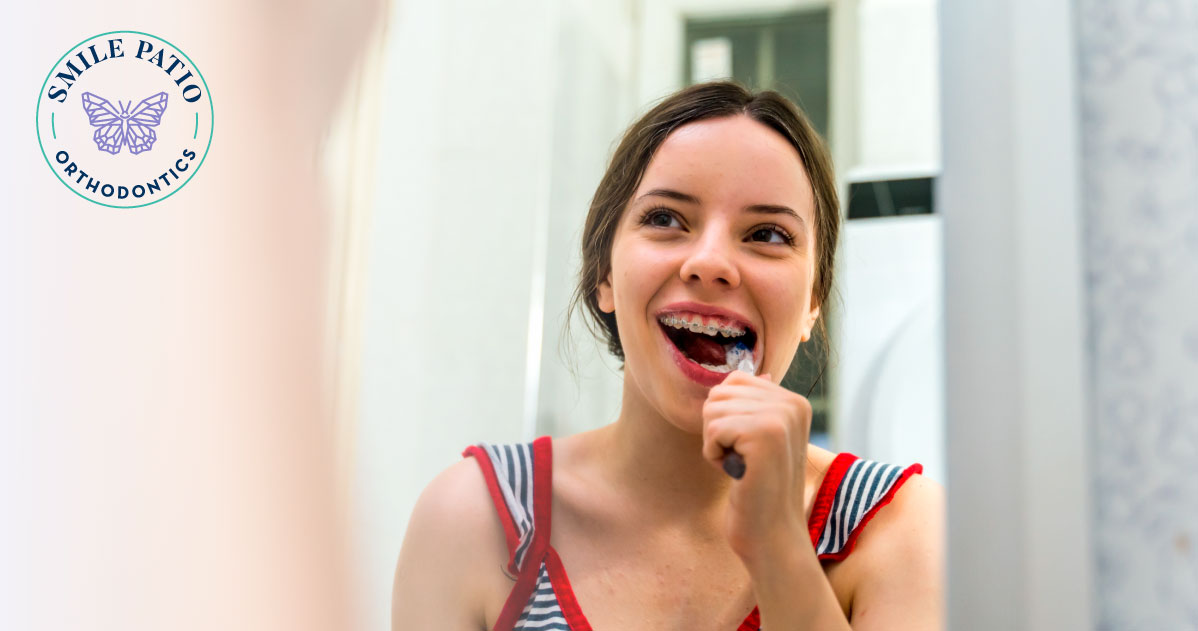According to the Pennsylvania Dental Association (PDA), around four million people wear some type of braces in the United States. This means that around four million people are trying to get the beautiful smiles they deserve. Sadly, a percentage of them will have some trouble along the way in the form of more extended treatment time, a different treatment while they have braces, or maybe just different cosmetic results than expected.
Most of the inconveniences that can pop up during your treatment result from low oral hygiene compliance. Meaning that patients didn’t take care of their oral health as they should. Here you’ll learn some of the consequences of bad hygiene and how to keep your smile healthy during your treatment.
Does Getting Braces Prevent Cavities?
Braces don’t prevent you from developing cavities, but they make fighting against them easier. Braces help fix various orthodontic issues such as overbite, underbite, gaps between teeth, overcrowding, and much more. Some of these issues make it more difficult for orthodontic patients to brush their teeth properly, making tooth decay and cavities much more likely. Thus, going through orthodontic treatment in Vista, like braces, allows for better care, overall oral hygiene, and fewer cavities as long as the patient follows a cleaning routine.
During your time with braces, the story is pretty much the opposite. While traditional braces will eventually make it easier for you to brush and floss properly, they do represent added difficulty in maintaining good oral health during your time with the orthodontic appliance. Metal braces or ceramic braces create various crevices where food particles and bacteria quickly accumulate, brackets and metal wires make it difficult to floss, and the bristles of toothbrushes don’t always reach the smaller crevices.
If the patient doesn’t take the precautions needed, they could suffer from tooth decay, gum disease, cavities, or even develop white spots on their teeth that will be highly noticeable after removing the appliance. If any of the mentioned conditions become severe enough, it could result in a complete halt to your Vista orthodontic treatment to deal with the other dental issue.
How Do You Maintain Good Oral Hygiene With Braces?
Although there are quite a few oral hygiene instructions for you to follow once you get your braces, consistency is the most crucial aspect for you to know and follow. Regardless of how well you brush and floss your teeth, you will still be vulnerable to infections and tooth decay if you don’t do it daily. Don’t forget that orthodontists recommend that you brush at least twice a day and floss once. If possible, every braces wearer should brush their teeth after every meal.
As previously mentioned, braces can make oral health care more difficult than usual. Fortunately, there are many tools available that allow you to overcome these added difficulties. Floss threaders, floss picks, and interdental brushes are a few of them. They allow you to clean the tiny spaces that braces create and make difficult to reach.
Water flossers are tools that can help you remove bacteria and food particles from the interdental space, just like regular floss. Although they do not replace flossing, they are a great helping hand in keeping your teeth clean.
Your diet will also be part of your care regimen. Sugary foods and drinks are incredibly bad for your dental care, especially with braces. Sugar reacts with bacteria in your teeth and creates acids that erode your teeth’s enamel, which can lead to cavities and infections. Avoiding this type of food diminishes the possibility of the acid staying in your mouth and having damaging consequences.
Of course, you will also want to avoid hard and sticky foods that can either damage your appliance or stay stuck in your teeth for hours at a time.
How to Maintain Oral Hygiene With Invisalign?
It is incredibly easier to maintain a healthy smile with Invisalign clear aligners when compared to more traditional braces. Since they are removable, every clear aligner wearer can brush and floss their teeth without obstructions. However, patients wearing Invisalign still need to brush or at least rinse their teeth after every meal.
To avoid damage to the clear aligners, patients need to remove them while they are eating or drinking anything other than water. If patients don’t brush or rinse after this, food particles and bacteria will stay between teeth and aligners and eventually turn into plaque, giving way to dental issues like tooth decay.
After every meal, patients should brush their teeth and aligners before thoroughly rinsing them with water. First, remove your aligners to brush and floss your teeth as you usually do. Then, brush the outside area first with a soft-bristled toothbrush and no toothpaste. It may be easier to do it while the aligners are on, but don’t do it after brushing your teeth. Remember to brush the inside of the aligners to remove bacteria and food particles. Additionally, you can use Invisalign’s cleaning crystals for a better result.
Keep Your Teeth Straight and Healthy
Here at The Smile Patio Orthodontics, we will help you keep a beautiful and healthy smile by either answering the questions you may have about proper care or with regular professional cleanings. Contact us here whenever you are ready to schedule an appointment with us.

